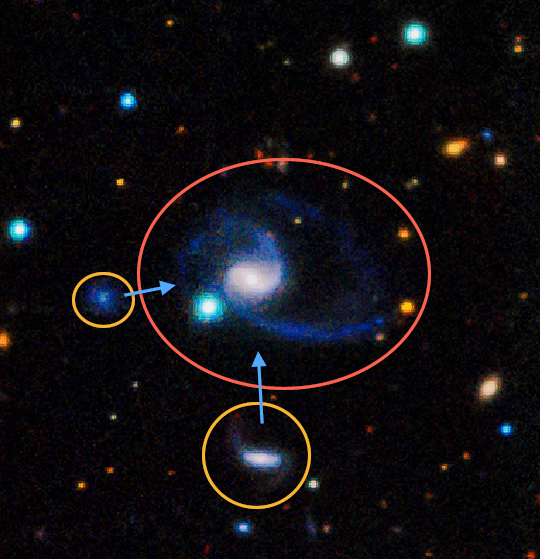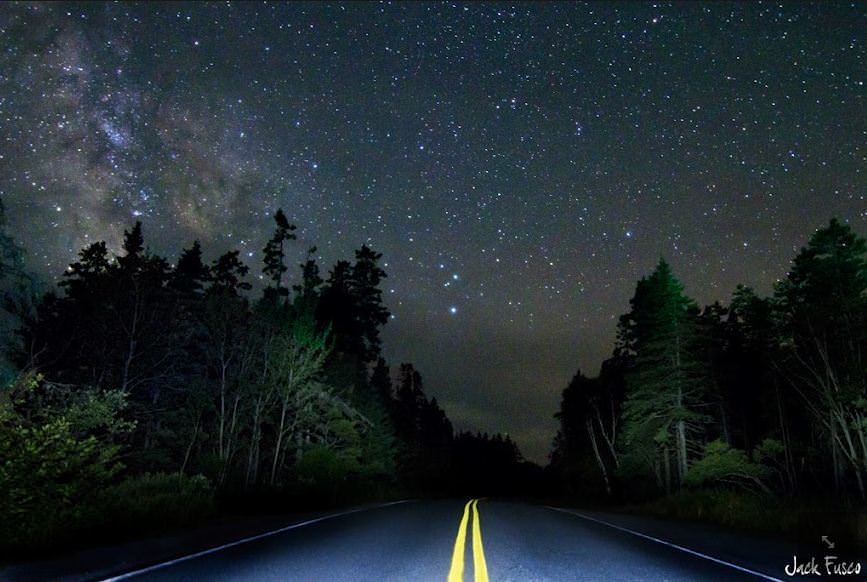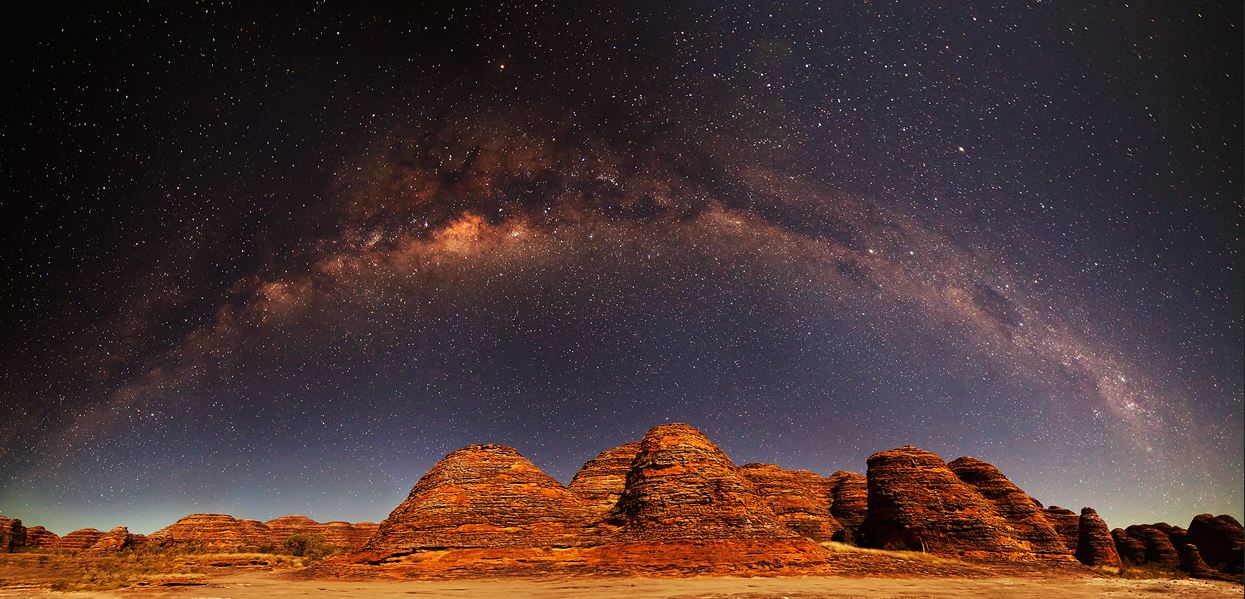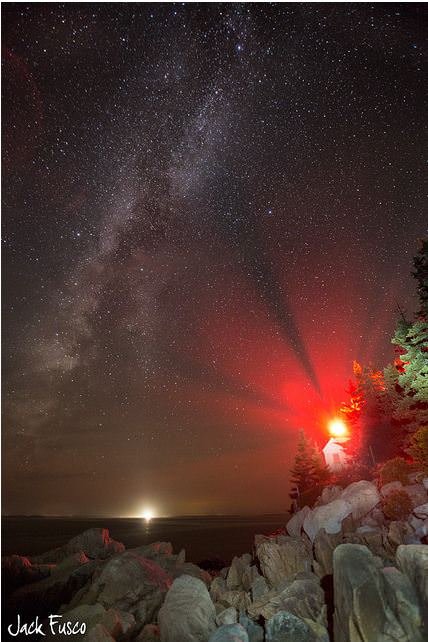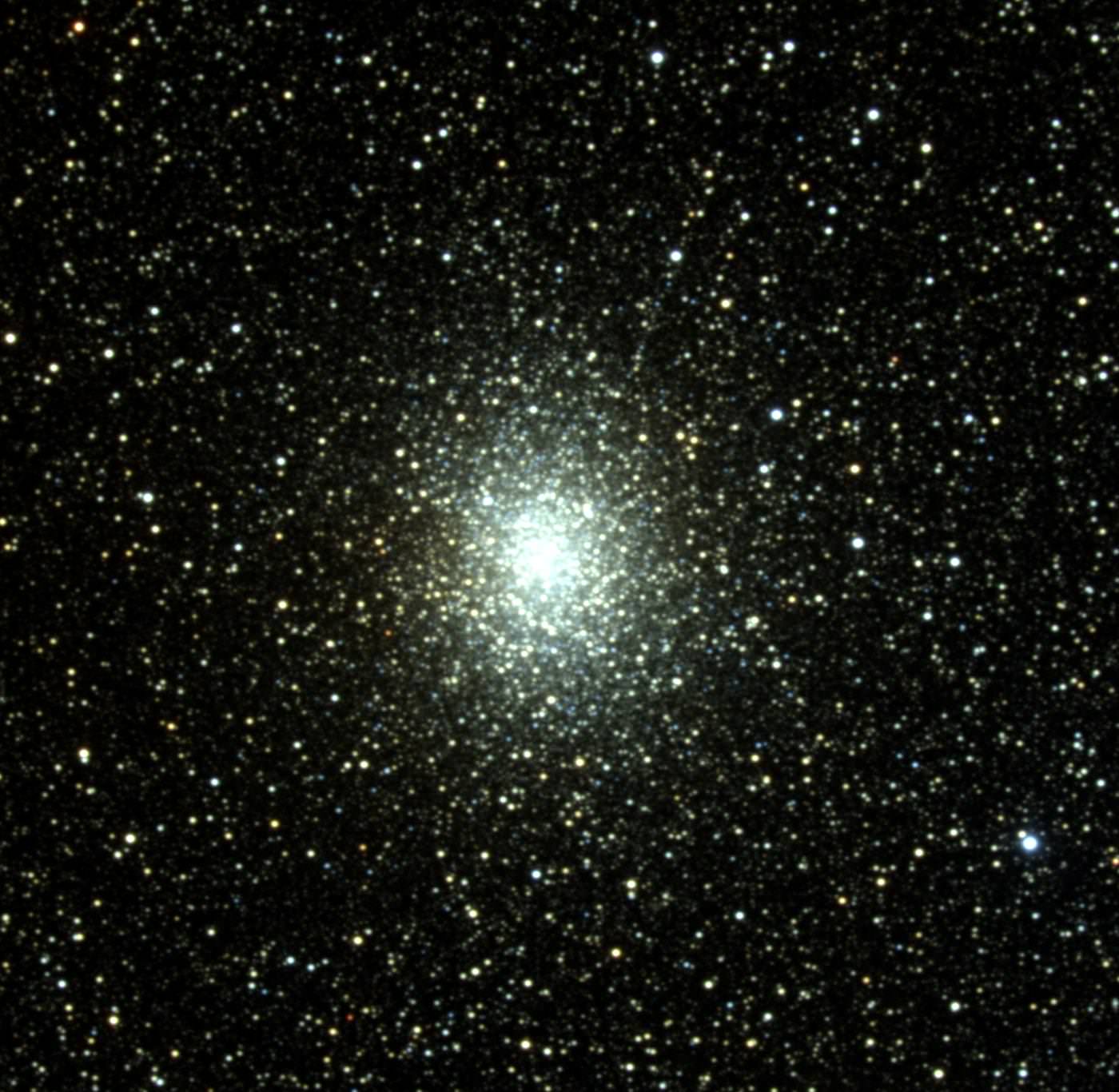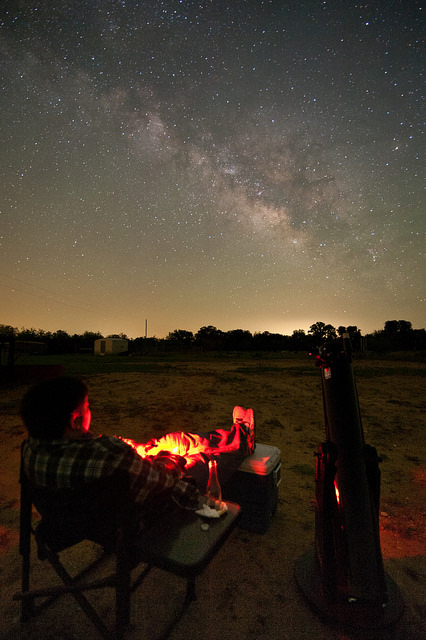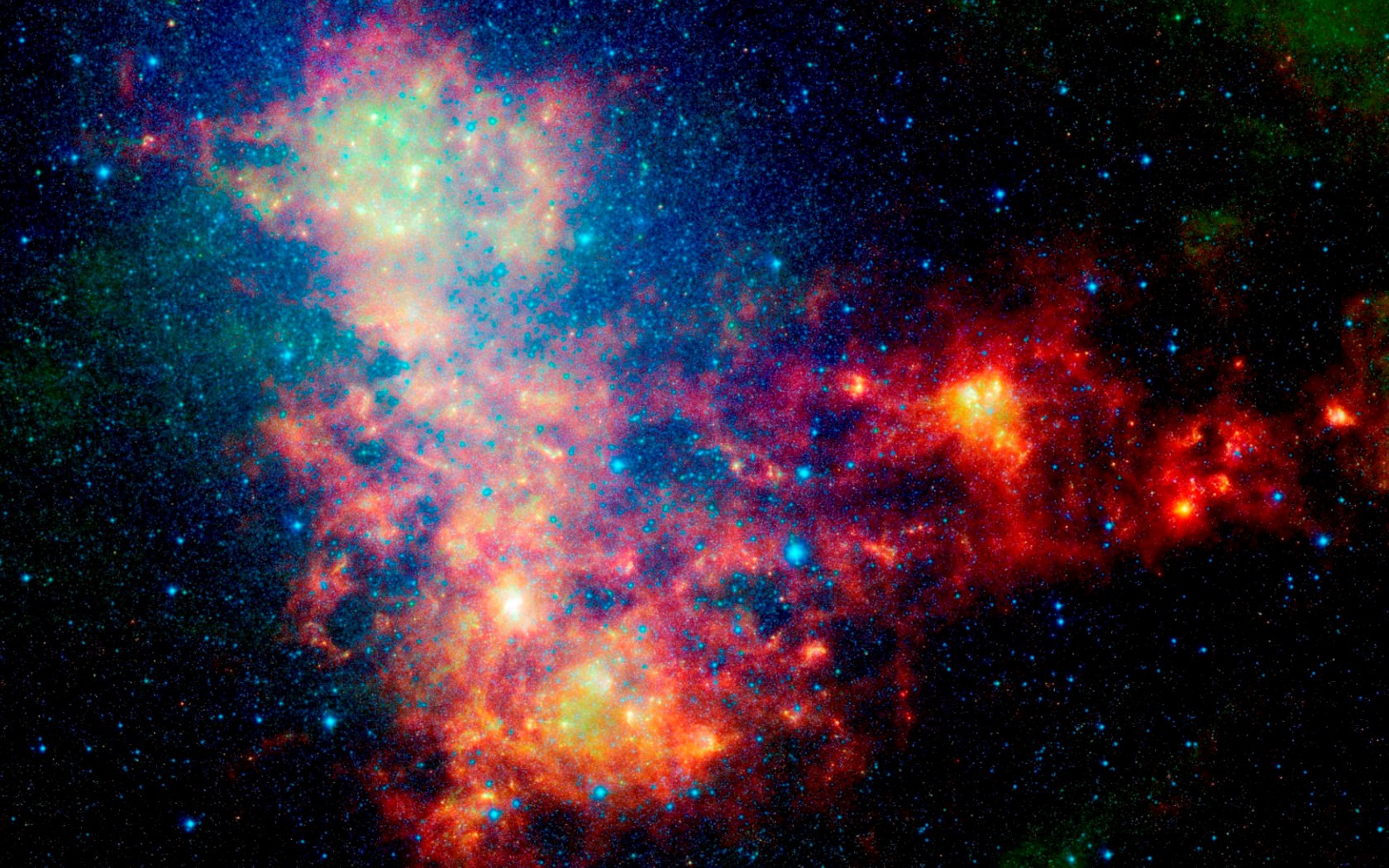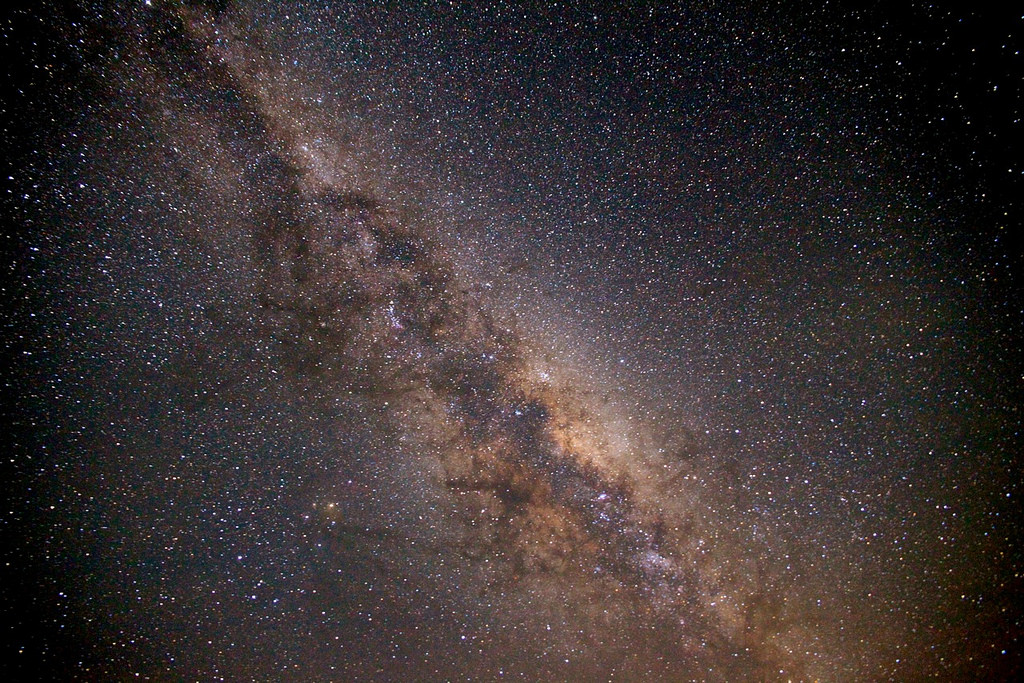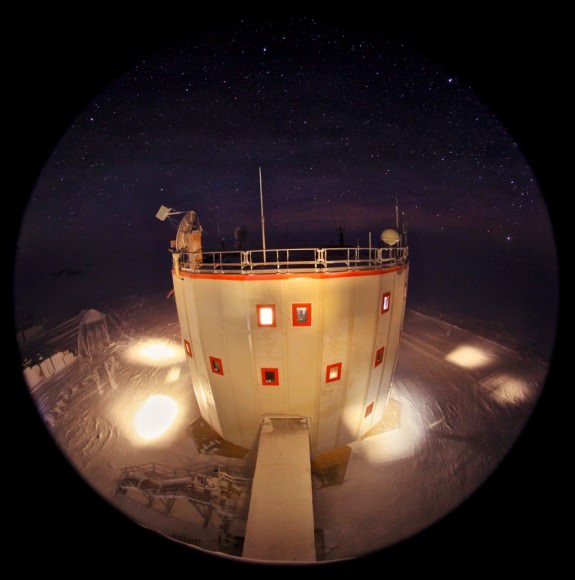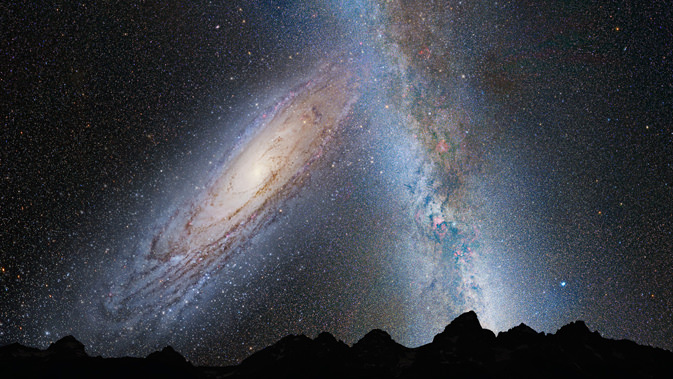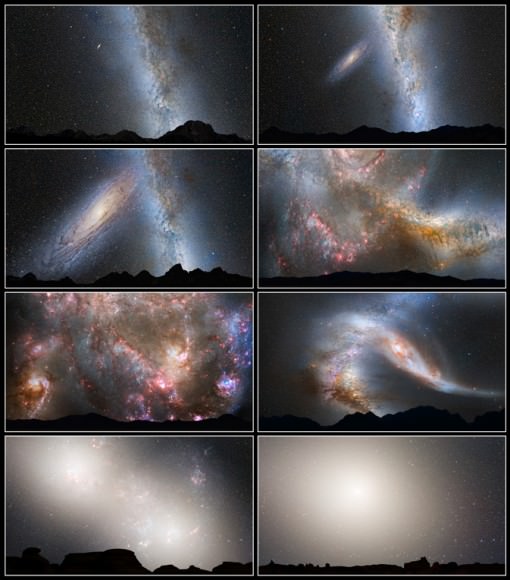Greetings, fellow SkyWatchers! My satellite dish and internet connection has now returned from the land of Oz. While it was great to have a span of days where no electric meant no annoying lights, it also meant creative cooking excursions on the gas grill in 100 degree weather. Ah, well… the things we do for dark skies! This is New Moon week, so get out there and enjoy the Milky Way! Whenever you’re ready, meet me in the back yard…
Monday, July 16 – Today in 1850 at Harvard University, the first photograph of a star (other than the Sun) was made. The honors went to Vega! In 1994, an impact event was about to happen as nearly two dozen fragments of Comet Shoemaker-Levy 9 were speeding their way to the surface of Jupiter. The result was spectacular, and the visible features left behind on the planet’s atmosphere were the finest ever recorded.
Now let’s return again to the oblate and beautiful M19 and drop two fingerwidths south for another misshapen globular – M62 (Right Ascension: 17 : 01.2 – Declination: -30 : 07).
At magnitude 6, this 22,500 light-year distant Class IV cluster can be spotted in binoculars, but comes to wonderful life in the telescope. First discovered by Messier in 1771, Herschel was the first to resolve it and report on its deformation. Because it is so near to the galactic center, tidal forces have “crushed” it – much like M19. You will note when studying in the telescope that its core is very off center. Unlike M19, M62 has at least 89 known variable stars – 85 more than its neighbor – and the dense core may have undergone collapse. A large number of X-ray binaries have also been discovered within its structure, perhaps caused by the close proximity of stellar members. Enjoy it tonight!
Tuesday, July 17 – If you’re up to another challenge tonight, let’s go hunting Herschel I.44, also known as NGC 6401. You’ll find this 9.5 magnitude globular cluster around two fingerwidths northeast of Theta Ophiuchi and a little more than a degree due east of star 51 (Right Ascension: 17 : 38.6 – Declination: -23 : 55).
Discovered by William Herschel in 1784 and often classed as “uncertain,” today’s powerful telescopes have placed this halo object as a Class VIII and given it a rough distance from the galactic center of 8,800 light-years. Although neither William nor John could resolve this globular, and they listed it originally as a bright nebula, studies in 1977 revealed a nearby suspected planetary nebula named Peterson 1. Thirteen years later, further study revealed this to be a symbiotic star.
Symbiotic stars are a true rarity – not a singular star at all, but a binary system. A red giant dumps mass towards a white dwarf in the form of an accretion disc. When this reaches critical mass, it then causes a thermonuclear explosion resulting in a planetary nebula. While no evidence exists that this phenomenon is physically located within metal-rich NGC 6401, just being able to see it in the same field makes this journey both unique and exciting!
Wednesday, July 18 – On this day 27 years ago, India launched its first satellite (Rohini 1), and 31 years ago in the United States Gemini 10 launched carrying John Young and Michael Collins to space.
Now, let’s carry ourselves into space as we take a very unusual and beautiful journey to a bright and very colorful pair of stars known as Omicron 1 Cygni. Easily located about halfway between Alpha (Deneb) and Delta on the western side, this is a pure delight in binoculars or any size telescope. The striking gold color of 3.7 magnitude 31 Cygni (Omicron 1) is easily highlighted against the blue of same field companion, 5th magnitude 30 Cygni. Although this wide pairing is only an optical one, the K-type giant is a double star – an eclipsing variable around 150 times larger than or own Sun – and is surrounded by a gaseous corona more than double the size as the star itself. If you are using a scope, you can easy spot the blue tinted, 7th magnitude B star about one third the distance as between the two giants. Although our true pair are some 1.2 billion miles apart, they are oriented nearly edge-on from our point of view – allowing the smaller star to be totally eclipsed during each revolution. This total eclipse lasts for 63 days and happens about every 10.4 years, but don’t stay up too late… We’ve still got 7 years to wait!
Thursday, July 19 – Today in 1846, Edward Pickering was born. Although his name is not well known, he became a pioneer in the field of spectroscopy. Pickering was the Harvard College Observatory Director from 1876 to 1919, and it was during his time there that photography and astronomy began to merge. Known as the Harvard Plate Collection, these archived beginnings still remain a valuable source of data.
It’s New Moon, so why not have a look at something that would make Edward Pickering proud? He enthusiastically encouraged amateur astronomers, and founded the American Association of Variable Star Observers – so set your sights on RR Scorpius about two fingerwidths northeast of Eta and less than a fingerwidth southwest M62 (RA 16 56 37.84 Dec -30 34 48.2). This very red Mira type can reach as high as magnitude 5 and drop as low as 12 in about 280 days!
Tonight let’s just enjoy a little stargazing and revel in the beauty of our own galaxy’s spiral arm – the Milky Way. For those living in the city, you owe it to yourself to get away to a dark location to enjoy this veritable “river of stars” which spans out of the galactic center south and runs overhead. Almost directly behind you from the galactic anti-center stretches the Perseus arm, and the sight is a beautiful one. If skies are fine, you can easily see the dark dust rift where the arm separates and the billows of light of unresolved stars. It’s the most glorious sight of summer! While we have many days yet before the Aquarid meteor shower officially reaches its peak, you will be pleasantly surprised at this year’s high activity. They’ve been flying out of the night sky for almost two weeks now, and it would not surprise me if you saw ten or more per hour of these quick, bright visitors.
Friday, July 20 – Today was a busy day in astronomy history! In 1969, the world held its breath as the Apollo 11 lander touched down and Neil Armstrong and Edwin Aldrin became the first humans to touch the lunar surface. We celebrate our very humanity because even Armstrong was so moved that he messed up his lines! The famous words were meant to be “A small step for a man. A giant leap for mankind.” That’s nothing more than one small error for a man, and mankind’s success continued on July 20, 1976 when Viking 1 landed on Mars – sending back the first images ever taken from that planet’s surface.
If you’re out at sunset, be sure to look for the slimmest crescent Moon you can imagine… It will point your way to nearby Mercury! For lucky viewers “down under” this is an occultation event and will only be observable after sunset from southernmost regions of central Australia. Be sure to check the resources for websites like IOTA for specific times and locations.
The first assignment of the evening is a pair of interacting galaxies. 40 degrees northwest of Beta Canum Venaticorum is NGC 4490 (Right Ascension: 12 : 30.6 – Declination: +41 : 38) and smaller, fainter companion NGC 4485 (Right Ascension: 12 : 30.5 – Declination: +41 : 42). This pair, also known as Arp 269, are quite unusual in appearance to the larger scope. NGC 4490 is around magnitude 10 and shows a bright, irregular core region and a rather strange profile. Known as the “Cocoon” galaxy, it appears to almost reach toward its companion 3 degrees to the north. Progressively larger scopes under ideal conditions will be able to make out some faint mottling in the NGC 4490’s structure.
Now let’s honor southern skies by exploring the fantastic, NGC 3372 (Right Ascension: 10 : 43.8 – Declination: -59 : 52) – the Eta Carinae Nebula. As a giant, diffuse nebula with a visual brightness of magnitude 1, (wow!) it contains the most massive and luminous star in our Milky Way galaxy, Eta Carinae. It’s also home to a small cluster, Collinder 228, which is only one of 8 cataloged open clusters within the area of this huge star-forming region; the others are Bochum (Bo) 10, Trumpler (Tr) 14 (also cataloged as Cr 230), Tr 15 (= Cr 231), Cr 232, Tr 16 (= Cr 233), Cr 234, and Bo 11. Star Eta Carinae is involved in open cluster Trumpler 16. This fantastic nebula contains details which northerners can only dream about, such as the dark “Keyhole” and the “Homunkulus” around the giant star itself. A fantastic region for exploration with both telescopes and binoculars!
Saturday, July 21 – Today in 1961, Mercury 4 was launched, sending Gus Grissom into suborbital space on the second manned flight, and he returned safely in Liberty Bell 7.
Since the moonlight will now begin to interfere with our early evening globular cluster studies, let’s waive them for a while as we take a look at some of the region’s most beautiful stars. Tonight your goal is to locate Omicron Ophiuchi, about a fingerwidth northeast of Theta. At a distance of 360 light-years, this system is easily split by even small telescopes. The primary star is slightly dimmer than magnitude 5 and appears yellow to the eye. The secondary is near 7th magnitude and tends to be more orange in color. This wonderful star is part of many double star observing lists, so be sure to note it!
Tonight would be an ideal time to look at a brilliant open cluster about a fist width east of Epsilon Scorpii – M6 (Right Ascension: 17 : 40.1 – Declination: -32 : 13). On a moonless night, the 50 or so members of this 2000 light year distant, 100 million year old cluster can usually be seen unaided as a small fuzzy patch just above the Scorpion’s tail. Tonight we visit because the brighter skies will aid you in seeing the primary stars distinctive asterism. Using binoculars or telescope at lowest power, the outline of stars does truly resemble its namesake – the “Butterfly Cluster”. The M6 is much more than “just a pretty face” and we’ll be back to study under darker skies.
Sunday, July 22 – Tonight instead of lunar exploration, we will note the work of Friedrich Bessel, who was born on this day in 1784. Bessel was a German astronomer and mathematician whose functions, used in many areas of mathematical physics, still carry his name. But, you may put away your calculator, because Bessel was also the very first person to measure a star’s parallax. In 1837, he chose 61 Cygni and the result was no more than a third of an arc second. His work ended a debate that had stretched back two millennia to Aristotle’s time and the Greek’s theories about the distances to the stars.
Although you’ll need to use your finderscope with tonight’s brighter skies, you’ll easily locate 61 between Deneb (Alpha) and Zeta on the eastern side. Look for a small trio of stars and choose the westernmost. Not only is it famous because of Bessel’s work, but it is one of the most noteworthy of double stars for a small telescope. 61 Cygni is the fourth nearest star to Earth, with only Alpha Centauri, Sirius, and Epsilon Eridani closer. Just how close is it? Try right around 11 light-years.
Visually, the two components have a slightly orange tint, are less than a magnitude apart in brightness and have a nice separation of around 30 degrees to the south-southeast. Back in 1792, Piazzi first noticed 61’s abnormally large proper motion and dubbed it “The Flying Star.” At that time, it was only separated by around 10 degrees and the B star was to the northeast. It takes nearly 7 centuries for the pair to orbit each other, but there is another curiosity here. Orbiting the A star around every 4.8 years is an unseen body that is believed to be about 8 times larger than Jupiter. A star – or a planet? With a mass considerably smaller than any known star, chances are good that when you view 61 Cygni, you’re looking toward a distant world!
Until next week, dreams really do come true when you keep on reaching for the stars!

